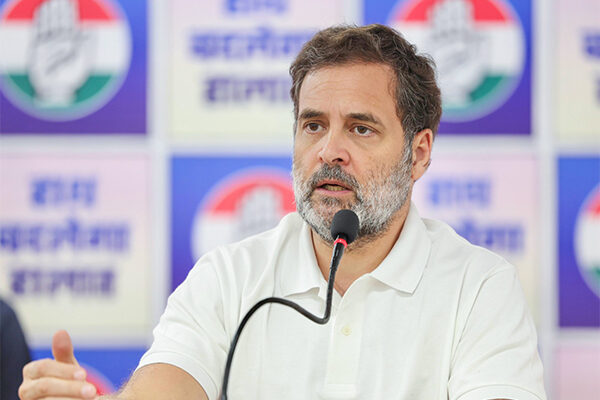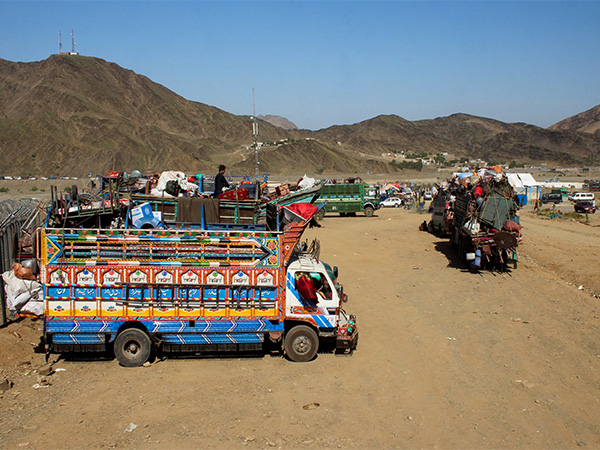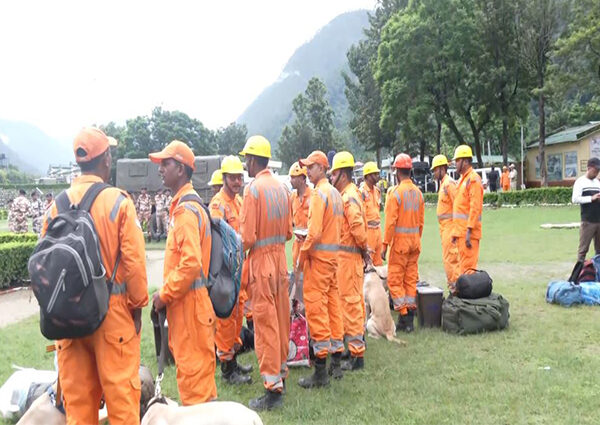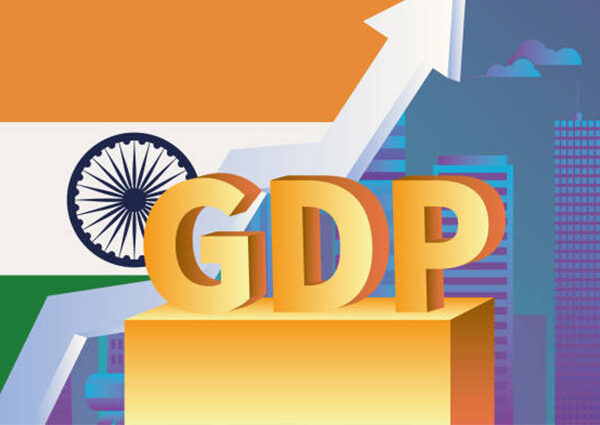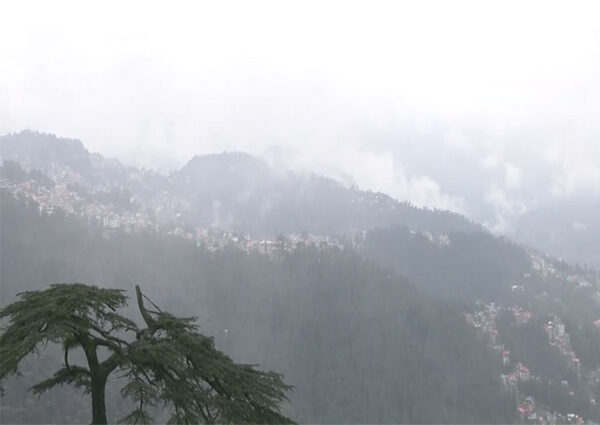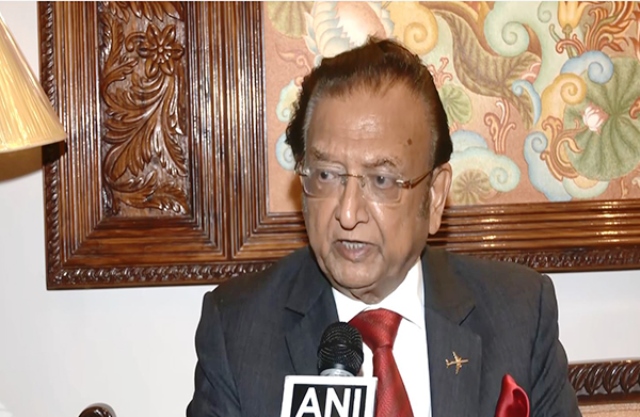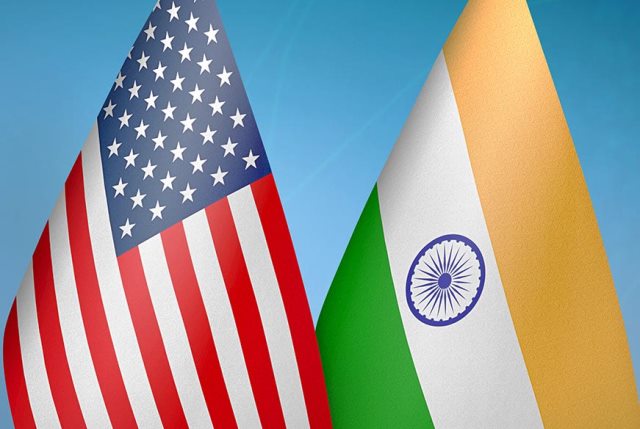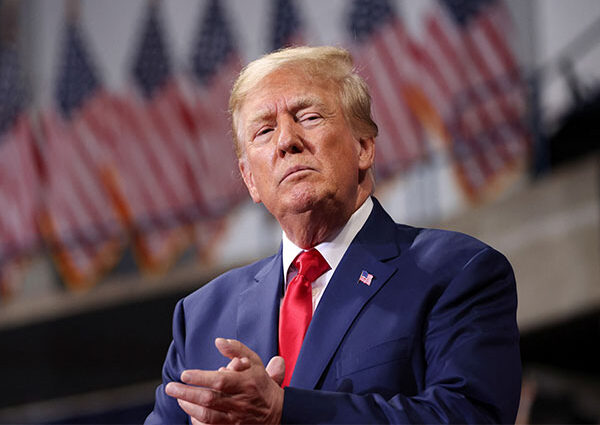Congress MP Rahul Gandhi on Thursday slammed the Election Commission of India (ECI) and alleged that the elections are “choreographed”.
Presenting Congress’ research on voting in the Mahadevapura Assembly in Karnataka, Gandhi alleged “vote chori” (vote theft) of 1,00,250 votes.
Addressing a press conference, Rahul Gandhi said that Congress won other seats while Mahadevapura was swept by the BJP.
“Elections are choreographed… Our internal polling told us we would win 16 seats in Karnataka; we won nine. We then focused on seven unexpected losses. We chose one Lok Sabha, and our team decided we could only focus on one Vidhan Sabha (seat). So we focused on Mahadevapur. Here is the broad math. All data is 2024 data from the Election Commission. Total votes polled in the Lok Sabha were 6.26 lakhs. The BJP won with 6,58,915, securing a margin of 32,707. But then we look at Mahadevapura, where Congress polls 1,15,586 and BJP polls 2,29,632. Congress wins all Vidhan Sabhas but this one. This seat wins them the election.”
“We found 1,00,250 votes stolen. Stolen in five different ways. Duplicate voters, fake and invalid addresses, and bulk voters in a single address, on a building with 50-60 people living. But when we go there, no record of those people living there. One family living in that house,” Rahul Gandhi alleged.
“Invalid photos…Then the misuse of Form 6. Form 6 allows new people to become voters,” he added.
Rahul Gandhi said that anti-incumbency hit every party but the BJP, which was seen in the Haryana and Madhya Pradesh polls.
He said, “Anti-incumbency hits every single party in every democracy, but for some reason, the BJP is the only party that does not suffer from anti-incumbency in a democracy. Exit polls and opinion polls say one thing, but you saw in the Haryana and MP elections, and suddenly the results go in another direction with a massive swing. This also included our internal polling, which is sophisticated.”
Flagging polling in multiple phases, he added, “There was a time in India with no EVMs; people voted on one day. Now, UP has a different voting day, and Bihar has some other day. Voting goes on for a month. This made us suspicious. Suddenly, the dates of the Haryana and Karnataka elections were changed.”
Reiterating his claims on fake voters in the Maharashtra Assembly Elections, he alleged that the number of voters added to the list in the five months ahead of the polls was more than the people added in the last five years.
“Maharashtra, we weren’t able to tell the logic behind it. In Maharashtra and Haryana, we saw it right in front of our faces. We said publicly and told EC, more voters were added in five months than in five years in Maharashtra. More voters than the entire population of Maharashtra. Huge jump in voter turnout after 5 pm. Our alliance got wiped out while the alliance swept in the Lok Sabha. At the state level, between Lok Sabha and Vidhan Sabha, one crore voters came in,” he alleged.
Rahul Gandhi’s response comes after the Election Commission of India on Saturday claimed that Gandhi is yet to respond to its June letter regarding his allegations of “election rigging” in the Maharashtra Assembly elections.
The EC said the Congress leader has not responded to an official invitation extended to him nearly two months ago. “Why? Is it because his media statements were baseless?” ECI sources asked.
In a letter dated June 12, the Election Commission had invited the Leader of the Opposition for an interaction regarding “rigging” in Maharashtra Assembly elections, which he raised in a write-up that he wrote for a newspaper on June 7. He had claimed that the same would be repeated in the Bihar assembly polls due later this year.
The June 12 letter reads, “We presume that any issue regarding the conduct of elections would have already been raised through election petitions filed in the competent court of law by the INC candidates. However, if you still have any issues, you are welcome to write to us, and the Commission is also willing to meet you in person at a mutually convenient date and time to discuss all issues. A convenient date and time may be communicated in this regard at the email ID.” (ANI)
